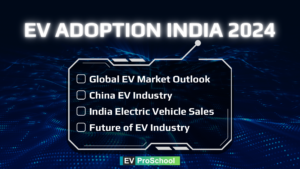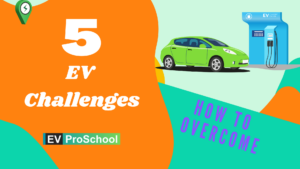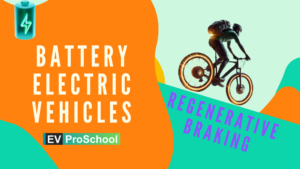In this blog, we’ll explore the Electric Vehicle Benifits, EV Cost Savings. We’ll look at global trends, Market Opportunity & China Case study. How EVs offer a path for a sustainable future.
India spends $132.4 billion (₹11 lakh crore) on crude oil imports, nearly double its defense budget, while China spends $332.8 billion (₹27.6 lakh crore) 1.5 times its defense budget. Despite similar challenges, China leads with 31.6% EV adoption in new sales, whereas India stands at just 6.38%. China’s push for energy independence and EV dominance is setting the stage for the future. [Ref1, Ref2]
The shift to EVs is not just about fighting climate change—it’s about energy security, economic stability, and global leadership. While China reduces its dependence on crude oil, India must catch up or risk falling behind in this technology-driven race.
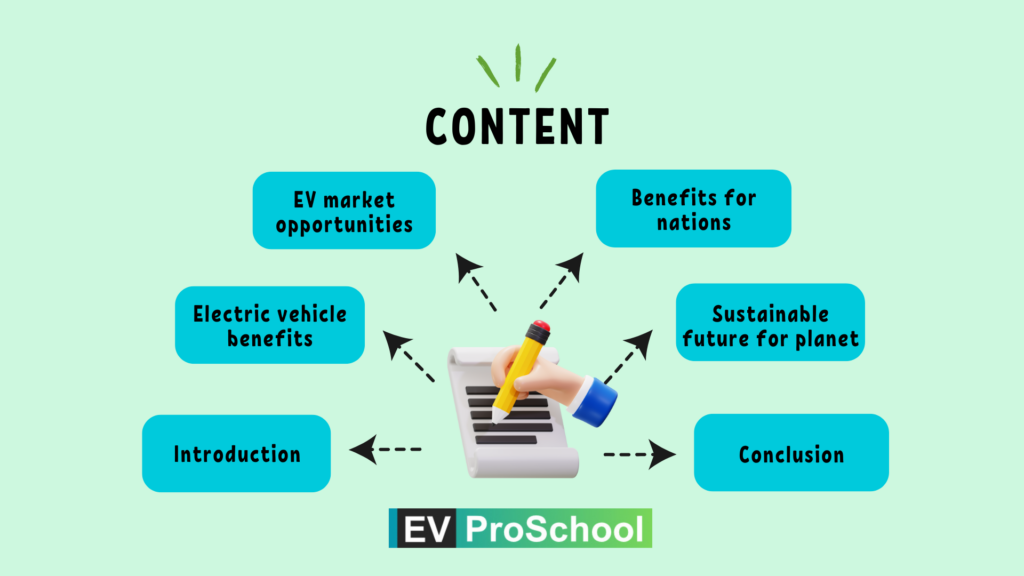
1. Electric Vehicle Benefits
EV Cost Saving
Rising fuel costs are burning a hole in your pocket! Did you know switching to Electric Vehicles (EVs) can save you up to ₹2 lakh annually? Let’s break it down for 2W, 3W, and 4W EVs
2W Example: “A delivery rider covering 60 km daily saves ₹32,000 annually by switching to an e-scooter.”
3W Example: “An auto driver in Kerala saves ₹96,000 yearly by shifting to an electric rickshaw.”
4W Example: “A car owner in Delhi driving 100 km daily saves ₹1.6 lakh per year with an electric car.”
Riding electric vehicles offers significant long-term benefits, especially in cost savings. The Journey Calculator is an easy tool that helps you estimate your savings annually, monthly, or even weekly. By providing basic inputs such as your daily riding distance, electricity cost, and whether you charge at home or public stations, you can quickly calculate your potential savings. We’ve already crunched the numbers, and the results are substantial. So, are you ready to switch to EVs and start saving on fuel costs?
Reduced Maintenance:
The maintenance cost of electric vehicles (EVs) is significantly lower compared to internal combustion (IC) engine vehicles. This is primarily because EVs have 40% fewer parts than IC vehicles, reducing the chances of frequent repairs. EVs are highly efficient with minimal energy losses, eliminating the need for regular oil changes and repairs associated with IC engines.
Unlike combustion vehicles, which produce high vibrations that shorten component lifespan, EVs have very low vibrations, increasing the durability of their parts. The complex IC engine, made up of many small parts, is replaced in EVs by a simpler electric drivetrain consisting of a motor and transmission system. This eliminates issues like oil leaks, fuel tank cleaning, or problems caused by foreign objects in fuel tanks.
Improved Driving Experience
Electric vehicles (EVs) offer an enhanced and mindful driving experience with several standout features. One of the coolest features is real-time feedback on energy consumption and a range predictor, allowing you to plan your trips effectively. Even basic EV models are easy to drive with simple controls like drive, reverse, and park, making them safe and convenient, especially for women drivers.
For long drives, EVs provide unmatched comfort due to their low vibrations, ensuring a smooth and peaceful ride. Many users have successfully completed 2000+ km trips in EVs, Pune-Mumbai-Pune journeys on two-wheelers like the Ather 450X. In four-wheelers, features like infotainment systems let passengers relax, enjoy air conditioning, and watch movies while the car charges at public stations.
Overall, EVs enhance the driving experience for both riders and passengers while contributing to a cleaner environment. With zero emissions and no noise pollution, they provide a quiet, eco-friendly ride and give you a sense of participation in combating climate change.
2. EV Market Opportunities
Market Growth
The electric vehicle (EV) market in India is growing at an exponential rate, particularly in the two-wheeler segment. The number of EV startups has surged from 54 in 2021 to over 150 by March 2024, marking a threefold increase in just five years. Key factors driving this growth include government incentives, foreign direct investments, rising market demand, and significant local investments. Indian EV startups raised $1.66 billion in 2022, a 117% increase from 2021, as consumer awareness grows and early adopters lead the shift.
| Country | Total EV Sales (2023) | EV Market Share | Growth Over 2022 | Sources |
|---|---|---|---|---|
| China | ~9.5 million | 31.6% | 38% | Electrive.com |
| Europe | ~3.0 million | 24% | 15% | IEA.org |
| USA | ~1.4 million | 8% | 55% | IEA.org |
| India | 1.53 million | 6.38% | 50% | Economic Times |
Startups and Infrastructure Opportunities
Notable startups like Ola Electric and Ather Energy, both based in Bengaluru, have transformed the market, pushing conventional automakers like Hero and Honda to adapt and compete. These startups showcase the dynamic nature of India’s EV industry, while traditional players struggle to keep up with the rapid pace of innovation.
Predictions suggest that by 2040, 50% of India’s two-wheelers will be electric, and the country aims for 30% of electric cars by 2030. Though experts estimate it may reach 20%, this growth is fostering smaller ventures, such as battery recycling and charging startups, which are bringing innovative solutions that not only transform India but also address global EV challenges.
Case Study: China’s EV Industry
China Maintains its dominance in the EV market, with projections indicating that electric cars could account for up to 45% of total car sales in 2024.
3. Benefits for Nations
Countries heavily reliant on oil imports become geopolitically and economically vulnerable. Transitioning to electric vehicles (EVs) can reduce this dependency by 40-50% and generate substantial economic savings, potentially saving billions annually.
Estimated Savings Through EV Adoption
Beyond energy independence, EV adoption also addresses environmental challenges. It reduces carbon emissions, improves air quality, and supports climate goals. For example, if India transitions to EVs, emissions could decrease by 30-40%, as transportation accounts for a significant portion of emissions.
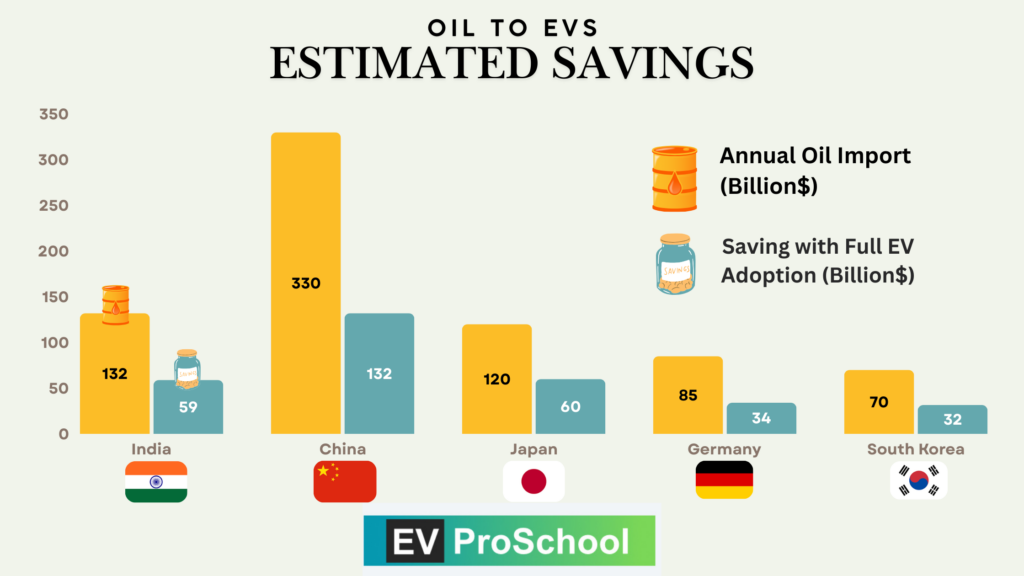
For countries like India, where many cities rank among the world’s most polluted, shifting to EVs is critical. This transition could help reduce pollution, improve public health, and position nations like India, China, Japan, and South Korea as global leaders in sustainable technology and energy independence.
4. Sustainable Future for our Planet
The world currently consumes approximately 100 million barrels of crude oil per day, with 60% of this demand driven by the transportation sector. If the global transition were made from internal combustion engine vehicles to fully electric vehicles (EVs), it would require around 34 terawatt-hours of battery storage to meet this demand.
Global Crude Oil Use and Transportation Energy Demand
| Metric | Value | Remarks |
|---|---|---|
| Global Crude Oil Use (2023) | 99.57 million barrels/day | Total global oil consumption |
| Oil Used for Transportation | ~59.74 million barrels/day (60%) | Transportation sector share of oil demand |
| Energy in kWh per Barrel | ~1,700 kWh | 1 barrel of crude oil ≈ 5.8 million BTU ≈ 1,700 kWh |
| Energy Used Daily for Transportation | ~101.6 TWh/day | 59.74 million barrels × 1,700 kWh |
| Adjusted Energy Demand (EV Efficiency) | ~33.87 TWh/day | EV drivetrains are ~3x more efficient than internal combustion engines |
| Battery Storage Needed (Global) | ~33.87 TWh | Total capacity needed if all transport shifted to EVs |
For nations heavily dependent on crude oil imports, such as China, India, Germany, and South Korea, this shift would require a combined battery production capacity equivalent to 80-100 plants with each plant having a capacity of 100 gigawatt-hours.
Country-Specific Battery Plant Capacity Needed for EV Transition
| Country | Annual Crude Oil Import (for Transport) | Energy Demand (Daily in TWh) | Battery Capacity Needed (GWh) | Battery Plants Required (100 GWh Capacity/Plant) |
|---|---|---|---|---|
| India | ~$59 billion (45% of $132B imports) | ~1.5 TWh | ~1,500 GWh | 15 plants |
| China | ~$132 billion (40% of $330B imports) | ~4.5 TWh | ~4,500 GWh | 45 plants |
| Germany | ~$34 billion (40% of $85B imports) | ~1.1 TWh | ~1,100 GWh | 11 plants |
| South Korea | ~$31.5 billion (45% of $70B imports) | ~0.9 TWh | ~900 GWh | 9 plants |
This transition would not only reduce global crude oil demand but also make these nations more sustainable by replacing oil imports with clean, renewable energy sources for battery charging. As a result, the transportation sector could significantly cut carbon emissions, helping combat climate change. Moving towards EVs presents a real opportunity for a greener future, reducing environmental impact while fostering energy independence and long-term sustainability.
Challenges Ahead
There are potential benefits of EVs: Savings for individuals, Power for various OEMs & startups to grow wealth, Relief for the nations towards contributions to carbon neutrality and hope for this entire planet and its sustainable future.
However, there are challenges ahead for electric vehicles, such as gaps in charging infrastructure, battery manufacturing, raw material mining etc. In the next blog post, we will explore what these key challenges are, which are currently slowing the EV space. And remember, .

